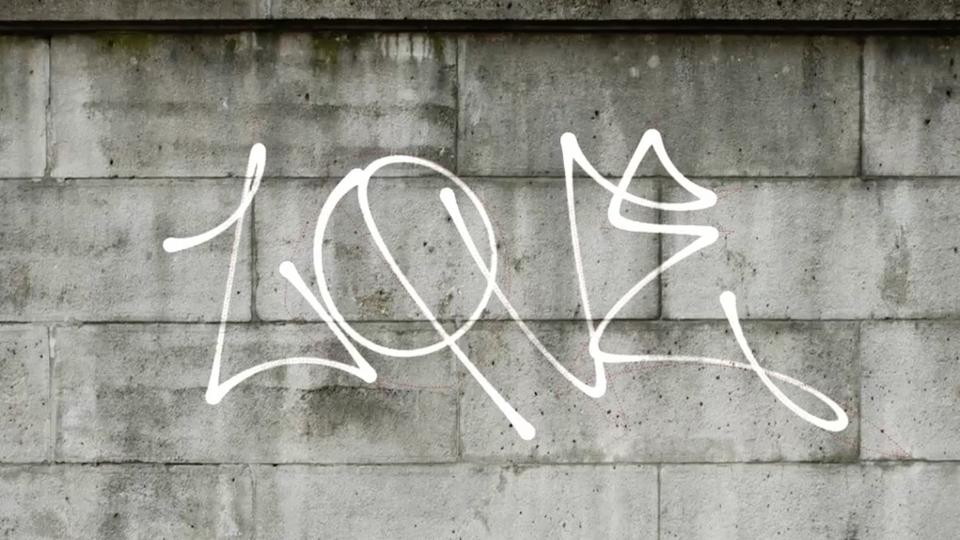Google backs graffiti artist robot research
Primary page content
A project to develop computationally-generated calligraphy and graffiti which looks convincingly human has been awarded a 2021 Artists + Machine Intelligence Research Award from Google.

'Love' tag algorithmically generated and digitally projected on a wall
Professor Frederic Fol Leymarie, Dr Daniel Berio and Xiaobo Fu from Goldsmiths, University of London have received one of five $20,000 (£15,000) fellowships for research proposals based on the creative application of machine learning and cultural research.
The award is the third AMI Research Award received by researchers from the Department of Computing at Goldsmiths in the past three years.
Alongside funding, the research team will have the opportunity to partner with Google researchers on their initiatives, building new and constructive long-term relationships.
‘Movement-centric calligraphy and graffiti generation’ seeks to develop ways of generating calligraphy and graffiti through a combination of methods which model time-based gestures typical of hand drawing movements.
By building on their previous research in machine learning, motor control, visual perception, graphonomics (the experimental study of handwriting and related skills), as well as art practice, the research team plan to go beyond the current state of the art for generating handwritten-style art forms computationally, which is largely based on inputs and outputs consisting of dense point sequences.
While drawing machines created to write, copy or generate art have existed for at least three centuries (one of the first drawing mechanical automatons created in the 1700s could write sentences in cursive script), drawing and handwriting in a convincingly human manner are challenging tasks for computational robots.
Professor Fol Leymarie’s research focuses on creativity and AI systems, including robots which can perform with artistic skills similar to expert humans. He joined Goldsmiths in 2004, where he launched an MSc in Arts Computing and an MSc in Games Programming. He is also an entrepreneur, launching London Geometry (2011) and DynAikon (2015).
As a researcher and artist working between computer graphics, robotics, and graffiti art, Dr Daniel Berio recently completed a PhD at Goldsmiths where he developed methods for the computer aided design and procedural generation of graffiti and calligraphy, with applications in robotics. As an artist with a background in graffiti writing, Daniel explores the intersections of this art form with techniques from computer graphics and robotics.
Xiaobo Fu is a visual artist and PhD student in Computer Art at Goldsmiths. Xiaobo’s research focuses on computationally-generating Chinese calligraphy - a challenging task due to its enormous character count and variety of artistic styles. As a calligraphy art lover and practitioner, Xiaobo explores new forms of expression of this thousand-year-old art with cutting-edge machine learning technology in order to understand and expand the application of AI in creative tasks.
As part of Google’s ongoing commitment to support academics working on positive societal initiatives, Artists + Machine Intelligence (AMI) supports artists and academics pursuing social science research that looks at technology’s implications and impacts on individuals and society. Both new and ongoing research is eligible, and Google does not retain any intellectual property from the research.
Find out more about the 2021 AMI Research Award winners
Merry Christmas from Baxter!